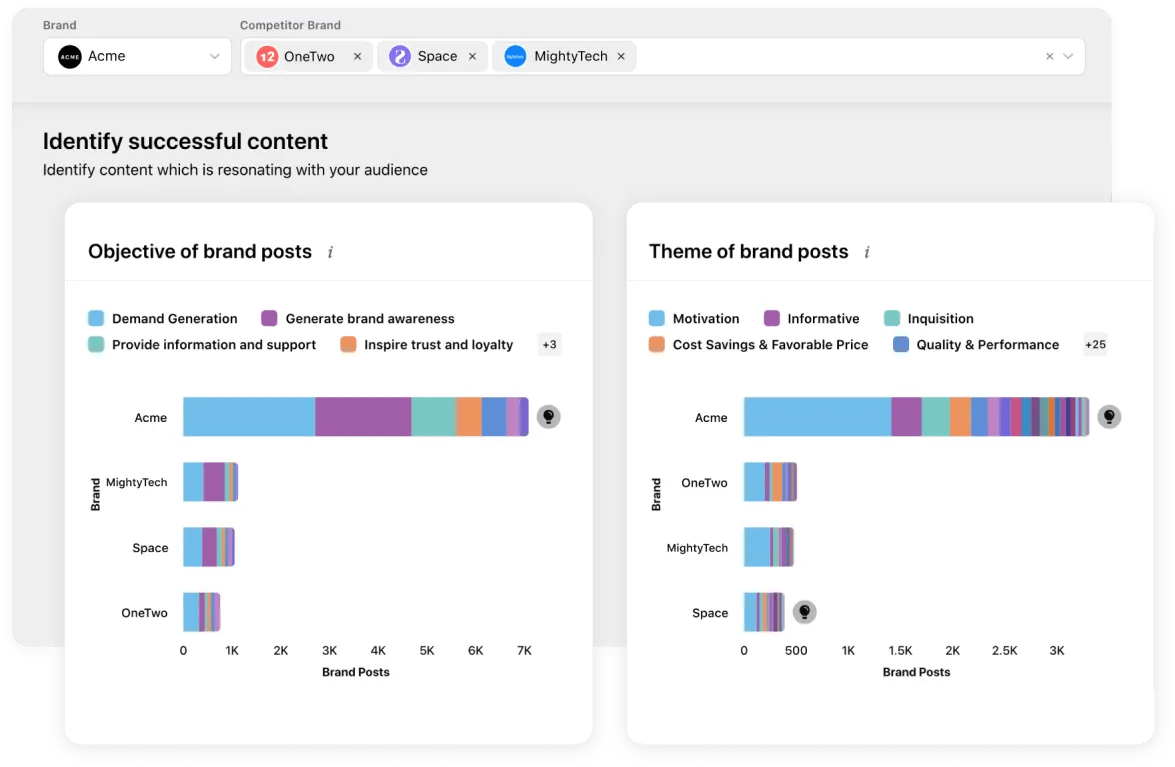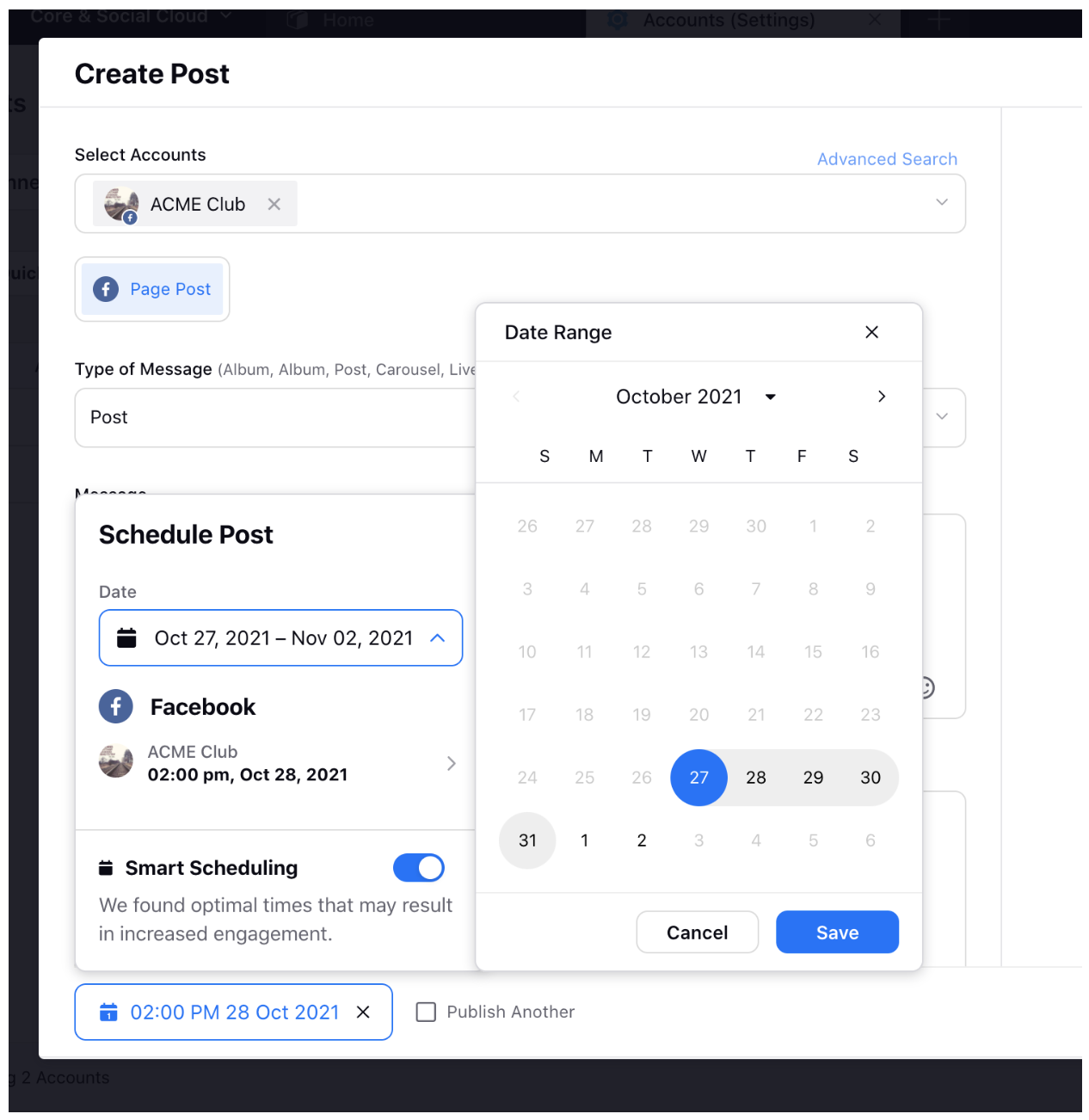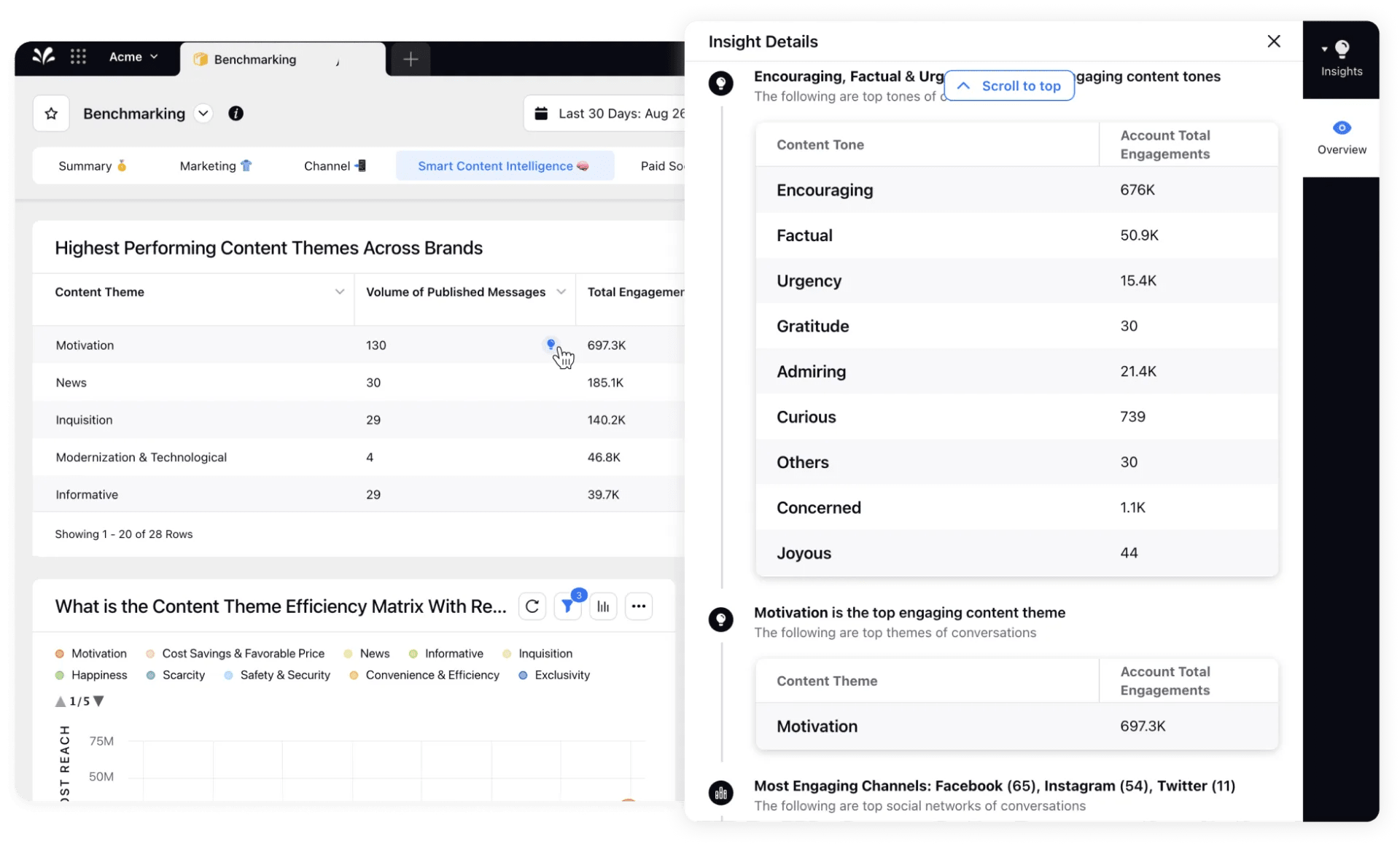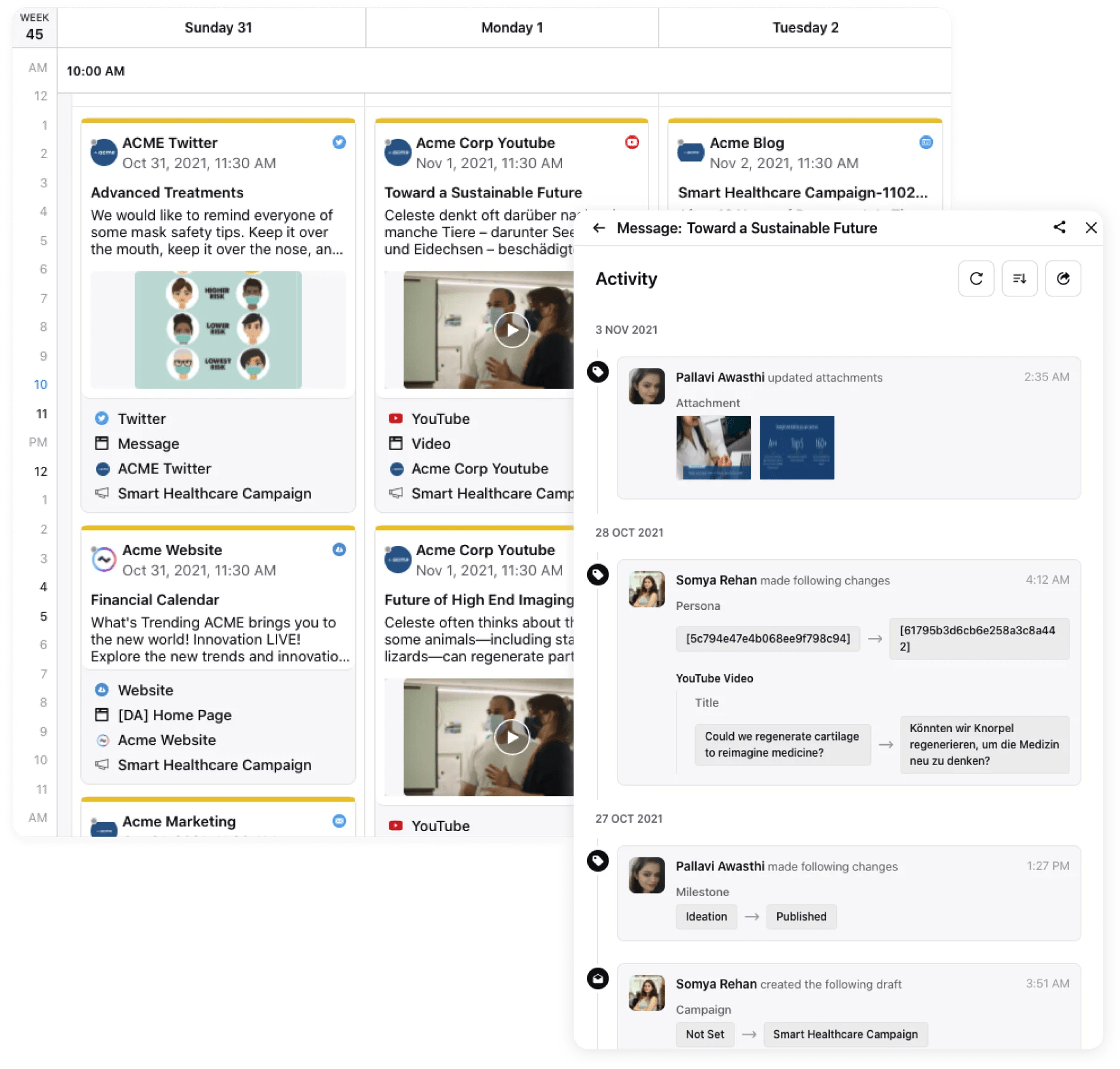Building a successful social media campaign has become more crucial than ever for brands. With fierce competition in the race for social media success, it is essential to carefully strategize and time each social media campaign you launch for maximum impact.
In this article, we will provide you with the essential steps to effectively build and execute a social media campaign that drives conversions.
What is a social media campaign?
A social media campaign is a strategic and synchronized marketing initiative that involves deploying a series of ads on various social platforms. Its purpose is to achieve specific business objectives such as lead generation or product promotion. With careful planning and coordination, brands can effectively leverage these campaigns to drive their desired outcomes.
These campaigns are carefully planned, focusing on specific demographics and audience segments. They are measured against predetermined benchmarks and closely monitored at every step.
Social media campaigns typically consist of the following elements:
Organic and paid posts
Paid promotions of specific posts
Brand-specific hashtags
User-generated content (zero-party data)
Partnerships with other brands and creators
Contests, giveaways, games
Collaborations with and shout-outs from celebrities
Don't worry if it seems overwhelming. In the next section, you'll find all the information you need to create a social media campaign that drives conversions.
9 steps to create a high-converting social media campaign
Creating a winning social media campaign is actually easier than you think. By following these nine steps, you’ll be well on your way to creating one yourself.
Step 1: Conduct thorough research — delve into your target audience, industry and competitors
Start by gathering knowledge.
In the book "The Art of War," Sun Tzu famously stated:
"If you know the enemy and know yourself, you need not fear the result of a hundred battles. If you know yourself but not the enemy, for every victory gained you will also suffer a defeat. If you know neither the enemy nor yourself, you will succumb in every battle."
Sun Tzu's principles can prove highly valuable for your team if you distill the core concepts and apply them to social media marketing.
Commence by understanding who your social media content will cater to and the competition you'll face. Gather extensive data on current industry trends, audience preferences and competitor strategies.
For instance, do your competitors frequently share tutorial videos? Do they host webinars or AMAs to address important topics? Which of their posts generate the highest engagement? How often do they post? Who do they collaborate with?

Did you know? You can automate your competitive research process with Sprinklr’s competitive insights & benchmarking tools. Gather, monitor and manage data and insights from modern digital and social channels, including Facebook, X (formerly Twitter), Instagram, YouTube, Quora, VK and Sina Weibo.
Regarding your target audience, what are the questions that most people are asking? What type of content captures their attention?
By compiling this data, your team can discern patterns, behaviors and assets that lead to success — information crucial for creating effective social media campaigns.
Pro Tip: Use a social media management platform like Sprinklr Social with built-in social listening capabilities to easily mine such data. You can search for specific keywords, phrases, brand or product names and gain insights into their performance on social media.
Step 2: Brainstorm for ideas
Based on research, you and your team will have to:
Identify the main needs and challenges of your audience
Assess your brand's capacity to address those needs and assist your audience in overcoming said challenges
However, it's important not to solely rely on ideas from the social media and marketing team. While they excel at building marketing protocols, collecting data, creating knowledge bases and engaging in creative exercises, their expertise may not extend to the strictly "business" side of things. It's natural and expected.
To ensure comprehensive collaboration, it's advisable to involve other teams and departments during the brainstorming stage. This will provide a 360-degree understanding of the market, product, investor expectations and desired outcomes, which are closely aligned with your social media goals.
Pro Tip: Maintain an "inspiration folder" where members from all teams can contribute their ideas at any time. Whether it's after a meeting or inspired by a podcast, logging these ideas will provide valuable insights during brainstorming sessions. You're guaranteed to receive great feedback on how to execute some of those ideas.
Step 3: Segment your audience
If this is going to be your company’s first social media campaign, it's crucial to analyze your customer base and segment them according to their unique needs. For instance, an e-commerce brand can segment its audience based on gender, age, location, preferred purchases, and other common behaviors.
Most companies typically segment their audiences based on the following factors:
Name
Gender
Age
Income
Location
Pain points
Favorite social media channels
Hobbies
Patterns in purchases of goods or services
Social media presence (if they have a public profile)
Audience segmentation is crucial for creating buyer personas, which are data-based profiles for different customer "types." Each segment has unique desires, needs and pain points. For example, a CEO has different service requirements compared to an SEO specialist, even if they use the same tool.
Quick Tip: By understanding the needs of each customer segment, you can tailor your content to meet their specific requirements. With Sprinklr’s advanced and flexible targeting capabilities, you can create custom audience segments based on network graphs, posted content, social profiles, social engagement metrics, geo-location and more.

Step 4: Build your strategy and shape content according to audience needs
It's time to develop your social media campaign strategy. Always prioritize your audience.
Your main objective is to appeal to your audience. Who are they and what do they want to see and discuss? This forms the foundation of your strategy and content calendar for social media.
Campaign goals typically revolve around fostering and increasing engagement with the right audience on social media. As such, it's crucial that the campaign consists entirely of content that resonates with your target demographic.
Keep in mind that lengthy content isn't favored by people scrolling through their feeds. To capture attention, aim to keep reels to 30 seconds and videos to a couple of minutes. However, if a particular topic necessitates in-depth discussion, feel free to delve into it. Serious scrollers often search for such topics and are more likely to read or watch content in detail. Just ensure that the majority of your video content on social media remains short.
Keep an eye on trends in your industry. If there's a high demand for something, make sure you offer it.
Be accurate and informative. Stand out from your competitors by explaining your points in detail, providing evidence and ensuring accuracy. Sharing incorrect information can instantly damage your brand's reputation.
Use visual content to grab attention. When people take a break, they prefer watching something short and entertaining.
Develop strategies for responding to user comments, customer queries and negative feedback.
Maintain a healthy mix of text, audio and video content, both long and short.
Create posts for important dates and holidays.
Engage with users through Q&A sessions, testimonials and casual conversations.
Repurpose content for different platforms. The story you tell with an image on Instagram can also be conveyed through words on your blog.
Utilize live streaming. Go live on Facebook Live or Instagram to answer questions and discuss relevant topics.
Create a unique, catchy and trendy hashtag (if possible) for your campaigns.
Step 5: Create a steady flow of content and post at ideal times
When it's time to launch your social media campaign, it's crucial to have a substantial amount of content ready for publishing. Simultaneously, new content must be created to ensure a continuous flow of posts throughout the campaign.
In addition, carefully choose the timing of your posts based on when your target audience is most likely to be online and engaged. For instance, people might quickly glance at your post while rushing to work or being stuck on a train, but they may not have the time to engage. On the other hand, during lunch breaks, they are more likely to leisurely scroll through their feeds and read, watch, comment on or like your content.

Quick Tip: Avoid posting content on all platforms simultaneously. Different social media platforms have different user behaviors and peak times. Adjust your posting strategy accordingly. Sprinklr’s Smart Scheduling capability helps you identify what time of the day you should schedule your posts to receive maximum engagement.
Smart Scheduling empowers you to:
Eliminate the guesswork in social scheduling
Save a significant amount of time to focus on tasks that truly matter

Step 6: Establish your objectives
To determine the effectiveness of a social media campaign, it is crucial to evaluate it against predefined objectives. Translate these objectives into quantifiable metrics such as likes, comments, and other engagement indicators. These metrics serve as benchmarks against which the actual results of your campaign will be assessed by managers and stakeholders.
When setting realistic goals, it's important to consider multiple factors. While your brand may not experience instant viral success with posts in your initial campaigns, focusing on creating great content and optimizing its reach is crucial. However, it's unrealistic to expect "TikTok star" numbers without collaborating with actual TikTok influencers.
To gauge what can be realistically achieved at your brand's current level, closely study your industry. Keep in mind that engagement goals for an early-stage startup will differ from those of a well-established company that already generates revenue. Social media campaigns play a vital role for startups, whereas legacy companies have a more mature presence. Remember, building a strong social media presence takes time and strategic planning.
When planning your social media strategy, it is important to have a thorough discussion with your social media team about their capabilities for the upcoming quarter. Additionally, consult with product managers and customer support representatives to identify popular features or frequently asked questions that can boost the popularity of your posts and manage your expectations.
It is crucial to understand that achieving your campaign goals will take time. It is unlikely that you will immediately reach the desired levels of reach and engagement within the first few weeks. Patience and persistence are key.
Step 7: Be ready to make adjustments at any time
Once you've launched a campaign, your social media team will inevitably encounter unexpected challenges. The size and effort required to handle these issues will vary.
It's crucial to manage your social media campaigns as they progress. If things are mostly going well, your main focus will be ensuring regular posts, engaging with users who respond and perhaps addressing a few negative comments.
In the worst-case scenario, your posts may contain inaccurate or offensive information. At this point, you must be prepared to take quick action to mitigate the damage.
Did you know? The advanced social listening capabilities of Sprinklr Insights capture customer conversations from 30+ digital and social channels in one place. Smart Insights then analyzes all of this structured and unstructured data to shine a light on customer behavior, including how they think about and rate your brand, as well as real-time predictions about your competition.

Step 8: Strategize acquisition and retention via social media
To effectively engage with your audience on social media, it's important to create targeted posts for two key customer groups: existing loyalists and prospective users. Pay close attention to the concerns and inquiries of both segments.
Moreover, it is crucial to have distinct engagement strategies for each category. A potential new customer may want to know the benefits of a specific product, while an existing customer might have questions about new features. Be prepared to provide prompt assistance to both groups.
While some content may resonate with both segments, ensure that you create individual posts catering to each group specifically. Label your posts as "retention" or "acquisition" in your content calendar to stay organized.
Pro Tip: Having a hard time keeping track of your social media posts? Sprinklr’s Unified Calendar gives you full visibility into your team's campaign planning and production activities, allowing you to streamline workflows, eliminate redundancies and keep your messaging on-target on every channel.

Step 9: Engage and respond to your audience
Interacting with your audience is just as crucial as posting. The quality of your social media content is determined by your audience's perception, making it vital to gather their honest feedback.
Take note of every comment, tag and mention your content receives from its wider viewership. While many of them may be generic, you can swiftly respond with a polite "Thank you." In the event of any criticism, show appreciation to the commenter/reactor for their opinion and assure them that you will give careful consideration to their points.
Whenever a response permits, include links to other content created by your brand. For instance, if you're an e-commerce company and someone asks about your sourcing policies, you can direct them to a blog post that covers the same topic.
Of course, user comments and customer inquiries are valuable sources for generating ideas for your marketing content.
Pro Tip: Identify the users and commenters who exhibit high levels of engagement, such as asking follow-up questions or commenting multiple times, and reach out to them on social media.
How Sprinklr can help you deploy high-impact social media campaigns
Managing, editing, and monitoring social media content across various platforms can be a daunting task, even with a large team by your side.
The monitoring aspect, in particular, can be time-consuming and labor-intensive. Gathering real-time data from multiple platforms, consolidating it into a single view and analyzing the numbers to fine-tune your social media strategy requires meticulous effort.
Remember, it's crucial to find the right social media conversions to engage with prospects in a meaningful way and build long-term relationships.
And of course, all of this hinges on having the right social media management tool. If you need to consistently examine customer interactions across various channels, including websites, chat and messaging, you require access to state-of-the-art tools. Manually scanning social media for post performance, updated metrics, brand mentions, and engaging with every comment and query is simply not feasible for a team.
This is where a tool like Sprinklr Social can make all the difference. Here are a few of its standout features:
Enables interaction with customers across 30+ social and messaging channels.
Integrated listening capability to identify, study and participate in relevant conversations that don’t directly involve your brand.
AI-driven automated inbound triaging allows you to categorize messages by intent. By doing so, you'll gain insight into which conversations should take priority for engagement.
Track branded content from development through deployment across all digital channels — and enable cross-team collaboration and visibility every step of the way — on a single platform
Account-level permissioning and governance so you have controls in place to prevent PR crises and the publication of off-brand content
Robust compliance framework comprising approvals, governance rules and moderation processes
Ready to take your social media game to the next level? Don't hesitate to get in touch with us.
Related Reading:





